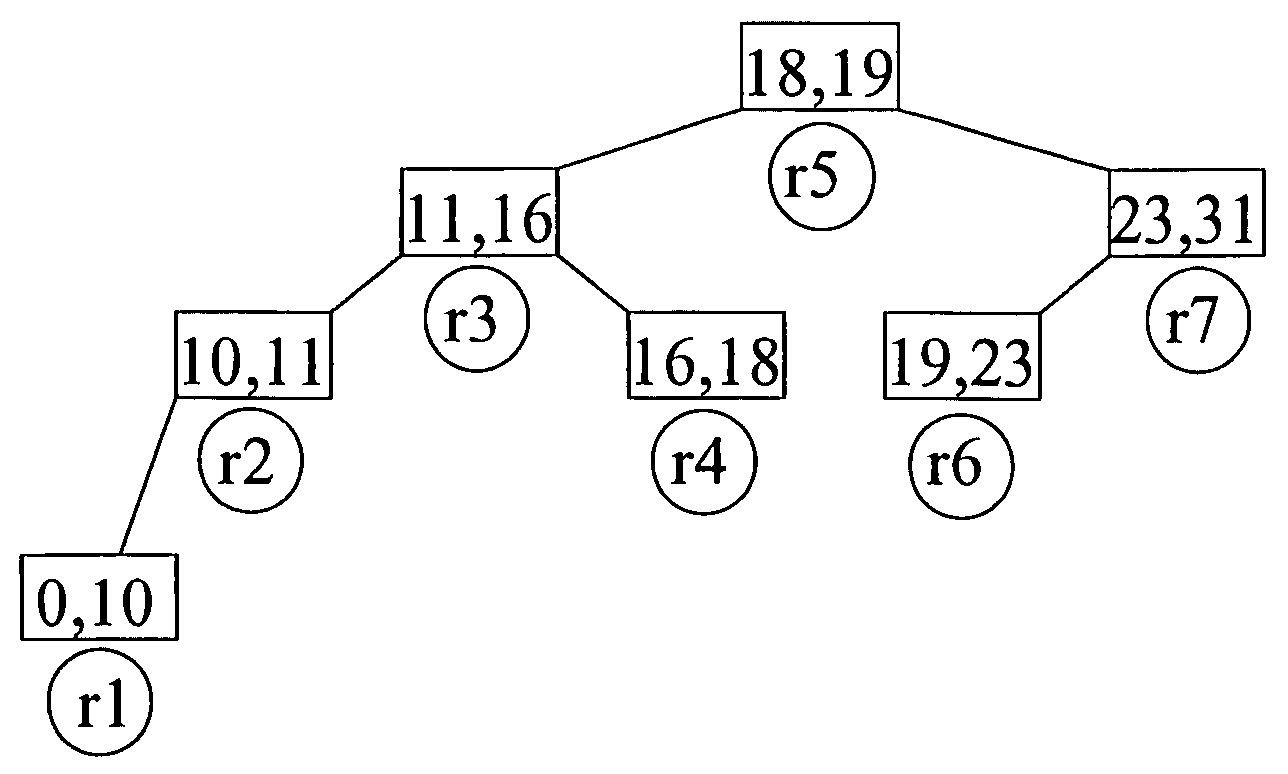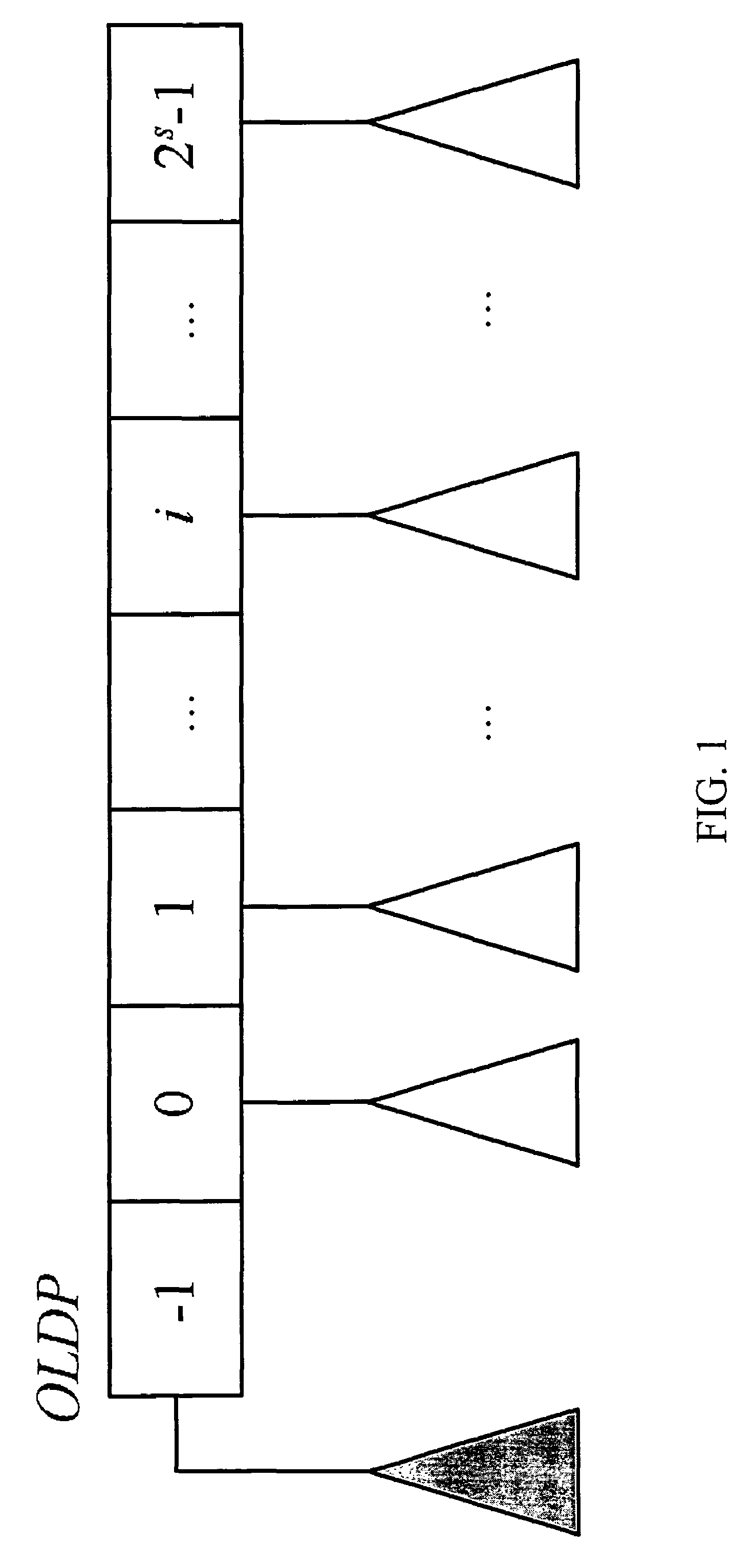Partitioning methods for dynamic router tables
a dynamic router and table technology, applied in data switching networks, store-and-forward switching systems, instruments, etc., can solve the problems of prohibitive insert/delete time, preprocessing time needed, and the amount of memory required by the rule-table data structur
- Summary
- Abstract
- Description
- Claims
- Application Information
AI Technical Summary
Benefits of technology
Problems solved by technology
Method used
Image
Examples
example 1
Prefix Partitions Represented by Priority Search Trees
[0114]The present invention uses priority search trees to represent dynamic prefix-router tables to reduce the processing time required to search, insert, and delete tuples. In one embodiment, the present invention uses priority search trees to perform prefix routing, wherein the best-matching prefix is the most-specific matching prefix (the range analog of the longest-matching prefix). Because a prefix is implicitly a range, it is unnecessary to assess intersection or conflicts in ranges.
[0115]To determine the most specific matching prefix, R is established as a set of ranges such that each range represents an address prefix. As illustrated in FIG. 13, the range (prefix) is represented as PST 39. By operating on the PST to define a rectangle 41 comprising the prefixes associated with the desired destination address, the most specific range (prefix) can then be found by locating the point in the defined rectangle 43 having the le...
example 2
Interval Partitions Using BIT and CPT
[0122]In one embodiment of the invention, a front-end basic-interval tree (BIT) and a collection of prefix trees are used to perform routing operations (i.e., lookup) on interval-based partitions. The prefix trees (also termed back-end prefix trees or CPT) are constructed for each of the prefixes in the router table. The prefix tree for prefix P comprises a header node plus one node, called a prefix node, for every nontrivial prefix (i.e., a prefix whose start and end points are different) or basic interval x such that next(x)=P. The header node identifies the prefix P for which this is the prefix tree.
[0123]As illustrated in FIG. 14A, a BIT is provided for the five prefix example of Table 4. The pointers to prefix-tree nodes are shown in the circle outside each node. In FIGS. 14B, 14C, 14D, 14E, and 14F, the back-end prefix trees for the five prefixes of Table 4 are illustrated. The prefix nodes of prefix trees of FIGS. 14B, 14C, 14D, 14E, and 1...
PUM
 Login to View More
Login to View More Abstract
Description
Claims
Application Information
 Login to View More
Login to View More - R&D
- Intellectual Property
- Life Sciences
- Materials
- Tech Scout
- Unparalleled Data Quality
- Higher Quality Content
- 60% Fewer Hallucinations
Browse by: Latest US Patents, China's latest patents, Technical Efficacy Thesaurus, Application Domain, Technology Topic, Popular Technical Reports.
© 2025 PatSnap. All rights reserved.Legal|Privacy policy|Modern Slavery Act Transparency Statement|Sitemap|About US| Contact US: help@patsnap.com



